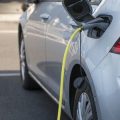1. Introduction to the UK Second-Hand EV Market
The second-hand electric vehicle (EV) market in the UK has experienced remarkable growth over the past few years, as more drivers look to make the switch to cleaner, greener motoring without committing to the higher price tag of a brand-new EV. This surge in interest is fuelled by several key factors: increased environmental awareness, government incentives and policies aiming for net zero, expanding charging infrastructure, and a wider selection of affordable used models entering the market. As new EV sales have boomed, especially since 2020, more pre-owned options are now available for buyers seeking value for money and lower running costs. For many Brits, buying a used EV offers an appealing route to sustainable transport while sidestepping some of the initial depreciation seen with new cars. The following table provides an at-a-glance overview of the main drivers influencing the UK’s second-hand EV market:
| Key Factor | Impact on Used EV Market |
|---|---|
| Environmental Concerns | Increased demand for low-emission vehicles |
| Government Incentives | Lower running costs and grants boost appeal |
| Charging Infrastructure Growth | Easier ownership experience encourages uptake |
| Broader Vehicle Choice | Wider range of models available second-hand |
| Cost Savings | Affordability compared to new EVs attracts buyers |
This combination of practical benefits and social responsibility is reshaping how British motorists approach car ownership, making used EVs an increasingly mainstream choice across the country.
2. Current Market Trends
The UK second-hand EV market is evolving rapidly, with a notable increase in buyers from diverse backgrounds. Recent data shows that younger drivers, especially those aged 25-40, are showing a keen interest in pre-owned electric vehicles, mainly due to lower running costs and growing environmental awareness. Families and retirees are also joining the trend, attracted by government incentives and the expanding range of available models.
Popular Second-Hand EV Models
| Model | Average Price (£) | Notable Features |
|---|---|---|
| Nissan Leaf | £8,000–£15,000 | Reliable, affordable, ideal for city driving |
| Tesla Model 3 | £28,000–£38,000 | Long range, advanced tech features |
| Renault Zoe | £7,500–£13,000 | Compact size, good range for daily use |
| Kia e-Niro | £20,000–£30,000 | Spacious interior, impressive range |
Regional Shifts in Demand
Demand for second-hand EVs is strongest in urban areas like London, Manchester, and Birmingham where low-emission zones encourage cleaner transport options. However, there’s also a noticeable uptick in interest across the South West and Scotland as charging infrastructure improves. Rural areas remain slower to adopt but are catching up as public chargers become more widespread.
Summary of Buyer Demographics and Demand Shifts
- Younger buyers (25-40): Leading demographic for used EV purchases.
- Families: Increasingly interested in larger models like the Kia e-Niro.
- Cities: Highest demand due to stricter emission regulations.
- Rural uptake: Gradually rising as infrastructure expands.
The UK’s second-hand EV market reflects changing attitudes towards sustainable transport and is expected to keep growing as availability improves and technology advances.

3. Pricing Dynamics and Depreciation
The pricing of used electric vehicles (EVs) in the UK is a complex affair, shaped by several unique factors that set it apart from the traditional petrol or diesel car market. Unlike conventional cars, EV prices are heavily influenced not just by age and mileage but also by battery health, technology updates, and government incentives. Understanding these dynamics is crucial for both buyers and sellers navigating this evolving landscape.
How Are Used EV Prices Set?
Dealers and private sellers consider a range of elements when setting prices for second-hand EVs. These include:
- Battery Condition: The state of the battery pack—its remaining capacity and any warranty coverage—can have a major impact on value.
- Model Popularity: Best-selling models like the Nissan Leaf or Tesla Model 3 tend to hold their value better due to higher demand.
- Mileage and Usage: While mileage still matters, it often takes a back seat to battery health in influencing price.
- Technological Features: Newer tech, such as improved range or advanced infotainment systems, can command a premium even in older models.
Depreciation: Faster or Slower Than Petrol Cars?
The depreciation rate of used EVs has been a hot topic in the UK. Initially, electric cars were criticised for steep value drops, partly due to concerns over battery longevity and limited charging infrastructure. However, recent trends suggest this gap is narrowing as technology matures and consumer confidence rises.
| EVs | Petrol/Diesel Cars | |
|---|---|---|
| 1-Year Depreciation | 15-20% | 10-15% |
| 3-Year Depreciation | 40-50% | 35-45% |
Main Factors Influencing Depreciation
- Batteries: Perceived cost of replacement and actual warranty coverage.
- Incentives: Shifts in government grants or congestion charge exemptions can influence market desirability overnight.
- Supply & Demand: With more used EVs entering the market, oversupply can push prices down temporarily.
Comparison with New Models
A key consideration for many buyers is whether to buy new or used. While new EVs come with full warranties and the latest features, used ones offer significant savings but may lack recent advancements. For example, a three-year-old Renault Zoe might sell for around £12,000 compared to its new price tag of £30,000+—a substantial saving but possibly with shorter range and fewer tech upgrades.
The bottom line? As the UK’s second-hand EV market matures, pricing is becoming more transparent and competitive, but buyers must weigh up battery condition and technological differences against the attractive price tags found in the used market.
4. Availability and Regional Differences
The availability of second-hand EVs in the UK varies considerably from region to region, with factors such as local infrastructure, urbanisation, and consumer demand all playing a part. Generally, larger cities and metropolitan areas—like London, Manchester, and Birmingham—see a greater selection of used electric vehicles due to higher new EV uptake, well-developed charging networks, and environmentally conscious populations.
Regional Stock Levels
| Region | Availability of Used EVs | Main Factors Influencing Stock |
|---|---|---|
| London & South East | High | Strong infrastructure, high early adoption rates, ULEZ incentives |
| North West | Moderate | Growing demand, expansion of charging points, lower overall supply compared to South East |
| Scotland | Moderate-High | Government incentives, public charging grants, city-focused stock levels |
| Wales & Northern Ireland | Low-Moderate | Sparser population, fewer charging stations, slower EV adoption rates |
| Rural Areas (UK-wide) | Low | Lack of charging infrastructure, longer travel distances between urban centres |
Factors Affecting Stock Levels Across Regions
- Charging Infrastructure: The density of public and private charging points is a key driver for used EV stock. Areas with robust charging networks attract more buyers and sellers alike.
- Local Policies: Initiatives like London’s Ultra Low Emission Zone (ULEZ) have led to higher turnover in second-hand EVs as drivers upgrade or switch out older models.
- Urban vs Rural Divide: City dwellers benefit from shorter commutes and more frequent public chargepoints, making EV ownership—and thus resale—more attractive.
- Socio-economic Factors: Regions with higher disposable incomes are quicker to adopt new technology and subsequently feed more vehicles into the second-hand market.
- Dealer Networks: The presence of established dealerships offering approved used EVs can significantly boost local availability.
Main Takeaway for Buyers and Sellers
If you’re in the market for a used EV in the UK, your options will be broader in metropolitan hubs than in rural regions. For sellers, listing your vehicle in areas with higher demand or better infrastructure could fetch a quicker sale and possibly a better price. As the UK continues its push towards electrification, these regional disparities are likely to narrow—but for now, location remains a major factor influencing the second-hand EV landscape.
5. Incentives, Running Costs, and Practical Considerations
When considering a second-hand EV in the UK, its crucial to weigh up the incentives on offer, the true running costs, and everyday practicalities. While government grants for new EVs have been phased out, there are still some perks available to used EV owners that can make ownership more attractive compared to traditional petrol or diesel cars.
Government Incentives for Second-Hand EVs
The UK government has shifted its focus from direct purchase grants to ongoing benefits aimed at lowering overall ownership costs. Key incentives include:
| Incentive | Details |
|---|---|
| Zero Road Tax (VED) | Most pure electric vehicles pay £0 road tax annually until April 2025. |
| ULEZ/CAZ Exemption | EVs are exempt from London’s Ultra Low Emission Zone charges and most Clean Air Zones nationwide. |
| Home Charging Grants | The EV Chargepoint Grant provides up to £350 off home charger installation for flat owners and renters. |
Running Costs: The Real Savings
One of the main draws of a second-hand EV is lower running costs. Here’s how costs compare with conventional cars:
| Expense | EV (Approx.) | Petrol/Diesel Car (Approx.) |
|---|---|---|
| Fuel/Electricity | £0.05–£0.10 per mile (home charging) | £0.12–£0.18 per mile |
| Annual Maintenance | £200–£400 (fewer moving parts) | £300–£600 |
| MOT & Servicing | No MOT required for first 3 years; less frequent servicing needed | MOT after 3 years; regular servicing needed |
Insurance premiums for EVs can sometimes be higher due to pricier parts, but this is gradually balancing out as more models hit the market.
Practical Considerations for Everyday Drivers
- Charging Infrastructure:Public charging points are increasing across towns and cities, but home charging remains the most convenient option if you have off-street parking.
- Range and Battery Health:Second-hand EVs may have reduced battery range compared to new models. Always check battery health reports before purchasing.
- Cargo Space & Versatility:While many small EVs excel at city driving, families should look at boot space and rear seat comfort.
- Warranty Transfers:Some manufacturers allow battery warranties to transfer between owners—worth checking when buying used.
The Bottom Line for UK Drivers
If you do mostly urban commutes or short trips, a second-hand EV could save you a tidy sum each year. However, rural drivers or those without easy access to charging may find it less practical—so it pays to weigh up your own driving habits and local infrastructure before making the switch.
6. Challenges Facing Buyers and Sellers
The UK second-hand EV market is growing, but both buyers and sellers still face several hurdles. Let’s take a closer look at the main challenges, including battery health concerns, charging infrastructure limitations, and financing issues. We’ll also explore some practical solutions for each.
Battery Health Concerns
One of the most significant worries for used EV buyers is the condition of the battery. Unlike petrol or diesel engines, batteries degrade over time, impacting range and performance. Many buyers are unsure how to assess battery health or what it means for long-term ownership.
Typical Battery Concerns
| Issue | Impact on Buyer | Possible Solution |
|---|---|---|
| Reduced Range | Anxiety about real-world driving distance | Request battery health certificate from seller/dealer |
| Lack of Warranty | Pays out-of-pocket for replacement/repair | Look for vehicles with transferable battery warranties |
Sellers can address these issues by providing recent battery diagnostics reports and highlighting any remaining manufacturer warranties. Buyers should always ask for these details before making a purchase.
Charging Infrastructure Limitations
While the UK charging network is improving, regional differences remain. Urban areas tend to have better access than rural locations, which may deter some potential buyers.
Charging Infrastructure: Key Issues & Solutions
| Challenge | Effect on Market | Potential Solution |
|---|---|---|
| Poor rural coverage | Limits market appeal outside cities | Check local charging maps; consider home charger installation grants |
| Lack of rapid chargers | Makes long journeys less convenient | Plan routes in advance; government investment in rapid charging points |
Financing Difficulties
The used EV market is still relatively new, so some lenders are cautious about offering competitive finance deals. Buyers may find higher interest rates or shorter loan terms compared to traditional vehicles.
Finance Options Comparison
| Type of Vehicle Loan | Typical APR (%) |
|---|---|
| Used Petrol/Diesel Car | 5–8% |
| Used Electric Car (EV) | 7–11% |
Banks and credit unions are slowly adapting as EVs become more mainstream. In the meantime, buyers can shop around for green finance deals or consider PCP (Personal Contract Purchase) schemes specifically designed for electric cars.
7. Outlook and Future Developments
Looking ahead, the UK second-hand EV market is set for significant change over the next few years. Several factors will drive these developments, including evolving government policies, advances in EV technology, and changing consumer preferences. Below is a summary of key predictions and anticipated trends:
Policy Changes on the Horizon
The UK government remains committed to its net-zero targets, with the 2035 ban on new petrol and diesel car sales firmly in place. This policy is expected to accelerate the turnover of used EVs as more drivers switch to electric earlier. Additionally, changes in incentives—such as potential updates to plug-in grants or road tax exemptions—could directly impact demand in the second-hand market.
Expected Shifts in Supply and Demand
| Factor | Short-Term Impact (2024-2026) | Long-Term Impact (2027+) |
|---|---|---|
| EV Supply | Increase as early adopters upgrade to newer models | Steady growth as more EVs enter used market |
| Consumer Demand | Rising interest, especially for affordable models | Normalisation; wider acceptance among mainstream buyers |
| Battery Tech Improvements | Slight price drops on older models as range anxiety decreases | Older EVs may see further depreciation if tech gap widens |
Market Challenges and Opportunities
The availability of charging infrastructure will remain a crucial factor for buyers outside major cities. As public and home charging solutions improve, it’s expected that rural adoption rates will increase. Dealerships and independent sellers may need to adapt their aftersales support to educate new EV owners about battery health, servicing, and charging options.
Predicted Market Trends
- Continued downward pressure on prices for older EVs as supply grows.
- An uptick in leasing and flexible ownership schemes to address affordability concerns.
- A stronger focus on transparency regarding battery condition in resale listings.
The coming years promise plenty of change for the UK’s second-hand EV market. While challenges remain—especially around pricing stability and infrastructure—the direction of travel is clear: greater choice, improving value, and a shift towards mainstream acceptance. For buyers and sellers alike, staying informed about policy updates and market trends will be key to making savvy decisions.


